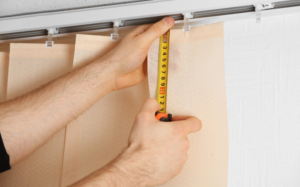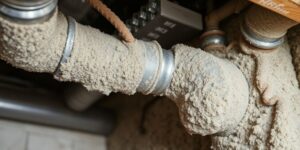Understanding Hydraulic Separators: A Crucial Component for Modern Heating Systems

In modern heating and cooling systems, achieving an efficient distribution of heat or cooling is critical. One of the components that plays a vital role in this process is the hydraulic separator. This device helps to manage the flow of heated or cooled water, ensuring that different parts of a system can operate independently without impacting each other negatively. It’s especially useful in systems with multiple circuits, such as those involving radiators, underfloor heating, or air handling units. In particular, the boiler separator is crucial for maintaining efficiency and protecting components in systems involving boilers.
What is a Hydraulic Separator?
A hydraulic separator, also known as a low-loss header, is a mechanical device designed to decouple the primary and secondary circuits in a heating or cooling system. This separation allows each circuit to function independently, meaning that variations in flow rates or pressure in one circuit don’t affect the other circuit. The primary benefit is to improve the overall efficiency and lifespan of the system, while also making it easier to maintain a stable temperature across different zones.
In systems where multiple circuits are present, such as a combination of boilers, radiators, and underfloor heating, a hydraulic separator prevents conflicts between circuits. It allows the boiler to operate at its optimal flow rate and pressure, regardless of what’s happening in the secondary circuits. Without this device, flow imbalances could lead to inefficient operation, system noise, and even damage to components over time.
How Hydraulic Separators Work
A hydraulic separator works by dividing the system into two main parts: the primary side and the secondary side. These two sides are connected, but the flow and pressure in each side can vary independently. The separator itself typically consists of a large chamber where water can circulate and mix without pressure interference.
When the system is in operation, hot water from the boiler enters the hydraulic separator and circulates within its chamber. From here, the hot water can flow to various secondary circuits, such as radiators or underfloor heating. If some of these circuits require more flow than others, the hydraulic separator prevents any undue stress on the boiler, ensuring that each part of the system gets the flow it needs without compromising efficiency.
For example, when a secondary circuit with underfloor heating requires low flow but the boiler operates at a high flow rate, the separator will manage the excess flow within its chamber. This prevents the boiler from overworking and ensures the system continues running smoothly. In some cases, hydraulic separators also help to remove air and debris from the system, improving overall efficiency and reducing maintenance needs.
Applications and Benefits
Hydraulic separators are used in a variety of applications, including residential, commercial, and industrial heating and cooling systems. They are particularly valuable in systems that feature multiple heat sources, such as combination boiler and solar thermal systems. Here are a few key benefits:
- Improved Efficiency: By decoupling the primary and secondary circuits, the hydraulic separator allows the boiler to operate at its most efficient flow rate, regardless of what’s happening in the secondary circuits. This leads to lower energy consumption and longer system lifespan.
- Reduced System Stress: Without a separator, variations in flow rates between different circuits can lead to imbalances that stress components such as pumps and boilers. A hydraulic separator helps to prevent this by allowing each circuit to operate independently, reducing wear and tear on the system.
- Temperature Stability: Hydraulic separators make it easier to maintain consistent temperatures across different zones of a system. This is especially important in large systems where different circuits may have significantly different temperature requirements, such as radiators and underfloor heating.
- Simplified System Design: For complex systems with multiple circuits, a hydraulic separator simplifies the design by eliminating the need for multiple pumps or control valves to manage flow rates. This not only reduces installation costs but also makes the system easier to maintain over time.
Key Considerations When Choosing a Hydraulic Separator
When selecting a hydraulic separator, it’s important to consider the size and flow rate of your system. The separator should be appropriately sized to handle the flow rate of your primary circuit while also being able to accommodate the demands of your secondary circuits. In some cases, additional features such as air or dirt removal can enhance the functionality of the separator and improve overall system efficiency.
Another consideration is the material of the separator. Most hydraulic separators are made from materials like stainless steel or brass, which are resistant to corrosion and can withstand high temperatures and pressures. For applications in harsh environments or those involving aggressive fluids, it’s essential to choose a separator made from durable, high-quality materials to ensure long-term performance.
Conclusion
In modern heating and cooling systems, a hydraulic separator plays a crucial role in maintaining efficiency and protecting the system from imbalances. By decoupling the primary and secondary circuits, it ensures that each part of the system can operate independently without compromising performance or damaging components. Whether you’re working with a residential heating system or a complex commercial setup, the right separator can significantly enhance both efficiency and longevity.
For systems involving boilers, the addition of a boiler hydraulic separator can help to improve efficiency and extend the life of the system. By ensuring that each circuit operates at its optimal flow rate, a hydraulic separator minimizes the risk of flow imbalances and reduces system stress. This not only saves energy but also makes the entire system easier to manage and maintain over time.







